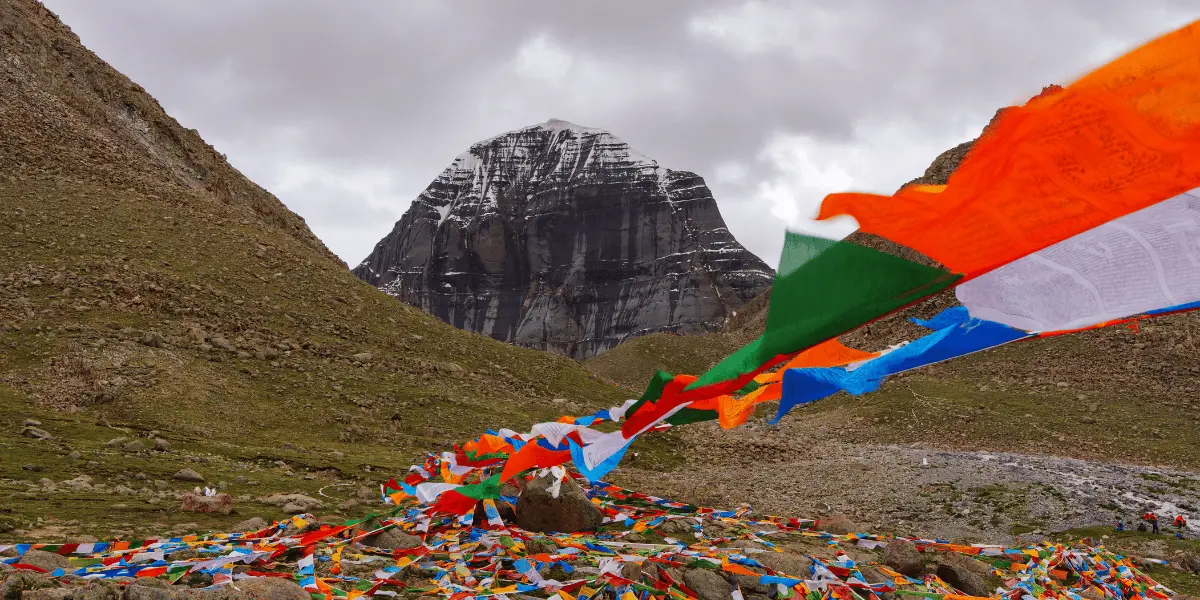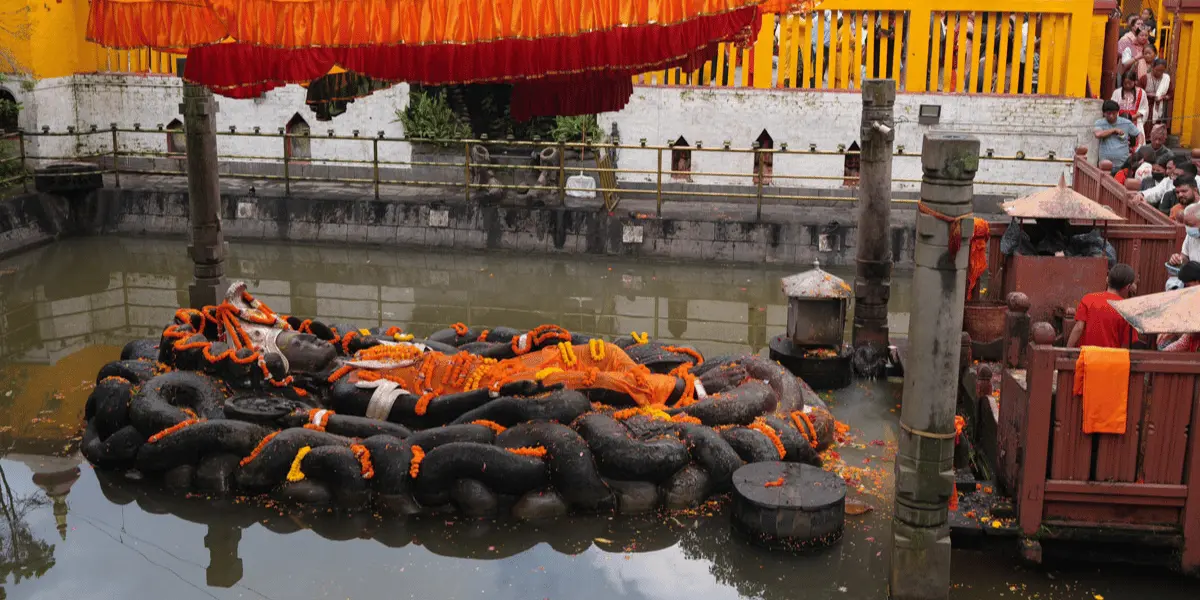With the anticipated news of the possible reopening of the Kailash Yatra for the Indian citizens in 2025, after being closed since 2019, we know pilgrims are eagerly looking forward to the spiritual journey. For catering to those needs, we are introducing our Kailash Mansarovar Yatra by Drive, specially designed for Indian travellers so that they can experience the magnificence of this pilgrimage with comfort and convenience without compromising the essence of this rare opportunity. The package involves exploration in both Nepal and Tibet, allowing you to have a holistic and enriching experience. In Nepal, one will have the opportunity to explore the cultural and pilgrimage heritage of Kathmandu, like Pashupatinath and Patan Durbar Square, while in Tibet you will involve yourself in the physical and spiritual journey in the presence of the divine Mount Kailash and pristine Lake Mansarovar. This perfect blend of religious sightseeing in Kathmandu and spiritual quest in Tibet is what makes your journey extraordinary.
Trip Facts
Here are some facts related to the Kailash Mansarovar Yatra by Drive:
|
Trip Name |
Kailash Mansarovar Yatra by Drive via Kyirong |
|
Trip Duration |
13 Nights | 14 Days |
|
Trip Difficulty |
Strenuous |
|
Starting Point |
Kathmandu, Nepal |
|
Ending Point |
Kathmandu, Nepal |
|
Mt. Kailash Height |
6638 m |
|
Average Altitude |
4000 m |
|
Maximum Elevation |
Dolma La Pass (5600 m) |
|
Best time to Visit |
May to September |
Exploring Key Attractions of Kathmandu - Nepal Side
As you follow the route of Nepal, the first stop for your Kailash Yatra presents you with various Hindu pilgrimage sites. During your stay in the city of Kathmandu, famous for its ancient heritage, rewards you with a visit to the unique pilgrimage sites. Exploring these key attractions will be an appetizer for your anticipated journey ahead.
-
Pashupatinath Temple: Pashupatinath Temple, a Hindu temple along the banks of the Bagmati River, is one of the most revered Hindu temples dedicated to Lord Shiva. The temple, also being a UNESCO Listed World Heritage Site, attracts Hindu pilgrims from all around the world.
-
Guhyeshwari Temple: Located near Pashupatinath is the significant Guhyeshwari temple dedicated to Goddess Parvati. It is known for its importance as one of the 51 Shakti Peethas in Hindu mythology. The temple holds deep religious significance, making it a must-visit for the pilgrimage travelers.
-
Jal Narayan Temple: At the foothills of Shivapuri peak is Jal Narayan Temple, also known as Budhanilkantha temple, dedicated to Lord Vishnu. The temple is known for its large reclining statue of Lord Vishnu in a serpent of snake. The statue, carved out of a single stone, symbolizes cosmic balance and the preservation of the universe.
-
Patan Durbar Square: Patan Durbar Square is an architectural gem of the Malla period showcasing the beauty of ancient Nepalese art, temples, and courtyards. With major attractions like Krishna Mandir, Golden Gate, Patan Museum, Sundari Chowk, and others, this durbar square is famous for its exceptional woodworks.
-
Banglamukhi Temple: The word Banglamukhi is derived from the words “Bagala” and “mukha”, meaning bridal and face, respectively. The temple, dedicated to Goddess Baglamukhi, represents the controlling power she has.
Major Attractions in Tibet
Once you cross the border and leave Nepal, the change in the landscape amazes you with its beauty. The Tibetan side of this yatra completely immerses you in its divine nature, spirituality, and culture with various attractions, including the majestic Mount Kailash and tranquil Lake Mansarovar.
-
Mount Kailash: Mount Kailash, standing as an immediate revelation of the Almighty in concrete form, is distinct for its pyramid-like shape with four symmetrical faces. It is considered an earthly abode of Lord Shiva in Hinduism. Regarded as spiritual, majorly by the Hindus, Buddhists, Jains, and Bon practitioners, this 6638 m peak amazes you with its grand presence.
-
Lake Mansarovar: The tranquil Lake Mansarovar, believed to have been created from the “mind of Brahma,” is revered by the Hindu pilgrims. The Hindus believe that bathing in the water of the Mansarovar washes away their sins. The lake is not only revered by Hindus but also holds a special place in the hearts of Buddhists, who view it as a place of purification and inner peace.
-
Yama Dwar: Often known as the “Gateway to Salvation”, Yama Dwar is the starting point of the spiritual Kailash Mansarovar Yatra. It is named after the god of death and justice, “Yama”, who is believed to preside over the judgment of the soul. Legend has it that passing through this gate sets you free from the worldly attachments and clears you from your sins.
-
Gauri Kunda: Situated on the eastern side of the Kailash peak is Gauri-kund, called Thuki-Zingbo by Tibetans. It is a small, beautiful, oval-shaped lake covered with sheets of ice almost all year round. It is believed to be the bathing place of Goddess Parvati, Lord Shiva's consort, so it is considered a sacred site.
Experiencing the Kailash Parikrama
Kailash Parikrama, a sacred trek, is about 52 KM for 3 days, the route starting from Yamadwar to the ending point near Darchen. It is believed that one parikrama of the Kailash peak washes away the sins of one life, 10 kora wash away the sins of one Kalpa (1 kalpa = 4.34 billion years), and 108 parikramas secure Nirvana in this very life. The circumambulation around Mount Kailash, revered in multiple faiths including Hinduism, Buddhism, Jainism, and Bon, is considered a once-in-a-lifetime opportunity for pilgrims. Experiencing the Kailash parikrama is the display of immense devotion and faith towards their religion, culture, and deities.
Along with the religious and spiritual significance, the circumambulation involves trekking through rugged terrain, high altitudes, and unpredictable weather conditions. The most difficult section of the yatra, the Dolma La pass at an altitude of 5600 m, pushes trekkers to their limits. Despite less oxygen and freezing winds, the sight of prayer flags fluttering against the sky fills one with a sense of achievement. Doing the yatra is challenging oneself with the terrains, letting you grow mentally and physically strong. Completing it is not just about the fulfillment of a physical feat but also an inner journey that makes a deeper connection to the divine.
Why Kailash Mansarovar Yatra for Indians?
“In the surroundings of Holy Kailash and Mansarovar, even the most wandering mind, to whatever religion it may belong-whether to Hinduism or Buddhism, Christianity or Mohammedanism, whether to atheism or agnosticism becomes concentrated and irresistibly, unknowingly, and unconsciously drawn as if propelled by someone from behind to the Divine Presence that is hidden behind this apparent vast universe; while a good sadhaka may even enter into sublime ecstasies involuntarily,” says Swami Pranavanda, author of one of the oldest books related to Kailash Mansarovar.
In Hinduism, Mount Kailash is revered as the sacred abode of Lord Shiva and Goddess Parvati, and participating in this pilgrimage is considered a pathway to moksha (liberation). With the highest number being the Hindus, the Indian travelers are often characterized by their deep reverence for their religion and respect for their culture and tradition. Many Indian pilgrims believe that circumambulating the mountain and bathing in the pristine Lake Mansarovar cleanses the sins and purifies the soul. So, for them this pilgrimage is deeply intertwined with their faith, reflecting their devotion to the gods and deities.
However, the yatra is not just about religious journeys but also a deep personal and cultural experience. The yatra involves the Indians coming together from various regions of India, connected by their shared faith and determination, which is a rare experience for them. Moreover, the strenuous trek through the Himalayan terrain, involving high altitude and unpredictable weather conditions, is seen as a test of endurance, challenging one's limits. It is an exceptional opportunity to physically, mentally, and spiritually connect with the divine.
Kailash Mansarovar Yatra by Drive is an exceptionally designed tour package for Indian pilgrims interested in the Kailash Mansarovar Yatra. Combining the pilgrimage sightseeing in Kathmandu and the spiritual journey passing various towns in Kathmandu, this package is your ultimate companion to experience the presence of holy Mount Kailash and the tranquility of Lake Mansarovar up close. Join us as we make this journey incredible for you.



